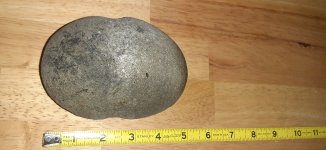unclemac
Gold Member
- Oct 12, 2011
- 7,066
- 6,984
- Primary Interest:
- Beach & Shallow Water Hunting
Earlier this month I posted on another thread that I hadn't found a grooved axe yet.... while this isn't quite an axe it is a pretty nice hafted hammer! I found it lying next to where I have found wooden wedges. I'll call it a win for sure!
Attachments
Upvote
18




